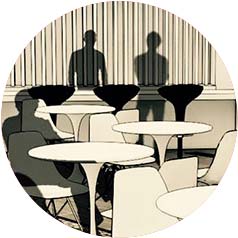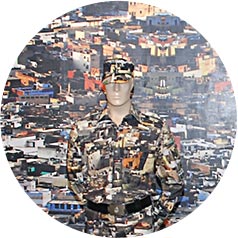S, M, L, XL
Size matters. It grows, expands and contracts. Having unapologetically borrowed the title of a book written by Rem Koolhaas in a reprise to the seemingly infinitely-expanding Indian city, I wonder if its diet of rapidly multiplying populations and high consumptive growth patterns will end in obese proportions of XXXL, where the bounds of the city are no longer discernible, its textures and lines merging, engulfing farms, riverbeds, forests and towns into a seamless urban amalgam. While the imagery of such a proposition may be accused of being science fiction, it may unfortunately be a futuristic truth. Projected, predicted and packaged by many a recent report.
That Mumbai is slated to double its population in the next two decades with a GDP greater than Malaysia or that Delhi will reach Meerut and the National Capital Region (NCR) will rank among the five largest cities in the world (!) is stated with such aplomb in a McKinsey report on India that, as designed, it rang the alarm bells of all the planning and governing bodies of the nation. But while this appears to be one of the biggest waves in the history of urbanisation, the urban corridor being planned between Mumbai and Delhi with 15 new cities in its linear path to house a large part of the astounding 590 million projected urban population (doubling the existing demographic figures in a mere two decades) is like a tsunami. To top it all, this is happening in what is best described as a complete theory and planning vacuum.
It is no wonder that planning exercises are now called ‘visions,’ for their complexities now mitigate the entire act of planning. The Indian city cannot be planned, it seems — it can only be ranked in global economic tables, compared in vibgyor bar graphs. Thus, people leading these processes are not planners but consultants – McKinsey, Jones Lang LaSalle and PricewaterhouseCoopers, to name a few. While economics is undisputedly an important factor for development, it cannot replace the entire exercise. Agreed, statistics cannot be undermined, but can they replace culture, social structure and identity? Or even presume to convert it to values that make them universal?
As we saw in the recent farmer uprising in Bhatta-Parsaul in Uttar Pradesh, the expansion of the NCR, though prompted by real needs for housing and industry, may usurp the lives and lands of those with less. Putting the political shenanigans and corruption aside, even if one is led to believe that land acquisition happened at ‘good and better’ rates, it is the reasons for the acquisition that need to be questioned and the manner in which these needs are proposed to be met. For, while land costs and needs for urban shelter rise in conjunction with the economy’s 8 per cent growth, causing our cities to expand into the countryside, they do so indiscriminately. This expansion is determined not by ecology, heritage and resources but by the simple motives of proximity and profit. Thus, it comes as no surprise that the fastest growing urban centers in our part of the world are also ranked lowest in the livability graphs of world cities.
The solution to this lies perhaps in the dichotomous sharing of size and creativity, where the city looks to expand outwards for its growth but its planning exercise starts looking inwards. A city may go from L to XL, but its design processes should address the S and M of its urban DNA — this DNA being both an invaluable and unique building block that grows the microcosm of the Indian city with values that shape its unique characteristics, giving it not just body but also soul, in an informed manner.
— Suparna Bhalla
Published on May, 21st 2011




























